Abstract
The application of neutral or acidic amino acids to oat coleptiles induced transient depolarizations of the membrane potentials. The depolarizations are considered to reflect H+ -amino acid co-transport, and the spontaneous repolarizations are believed to be caused by subsequent electrogenic H+ extrusion. The basic amino acids depolarized the cell membrane strongly, but the repolarizations were weak or absent. The depolarizations induced by the basic amino acids were weakly sensitive to manipulations of the extracellular and intracellular pH. The depolarizations induced by the other amino acids, in contrast, were more strongly affected by the pH changes. Several amino acids induced distinct but diminished depolarizations in the presence of 2,4-dinitrophenol or cyanide, but the repolarizations were generally eliminated. These experiments support the co-transport theory but suggest somewhat different mechanisms for the transport of the neutral, acidic, and basic amino acids. We suggest that the neutral amino acids are co-transported with a single H+ and that accumulation depends upon both the ΔpH and the membrane potential components of the proton motive force. The acidic amino acids appear to be accumulated by a similar mechanism except that the transport of each molecule may be associated with a cation in addition to a single proton. The permanently protonated basic amino acids appear not to be co-transported with an additional proton. Accumulation would depend only on the membrane potential component of the proton motive force.
Full text
PDF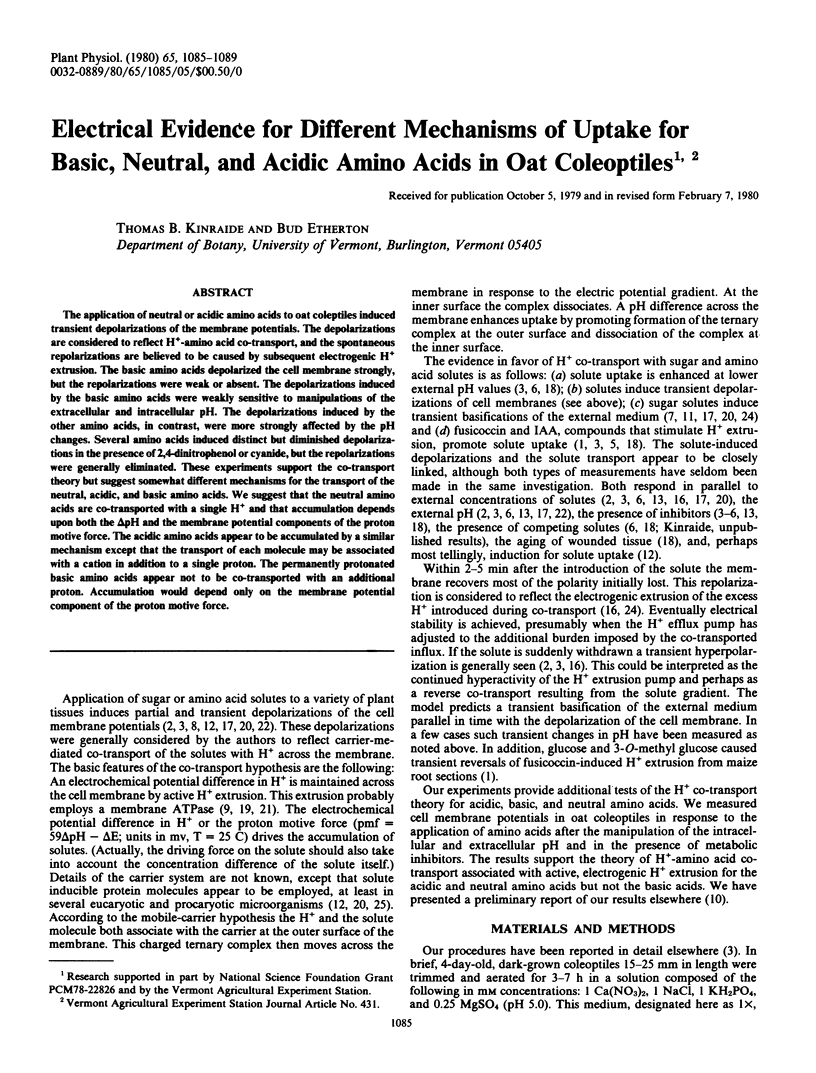
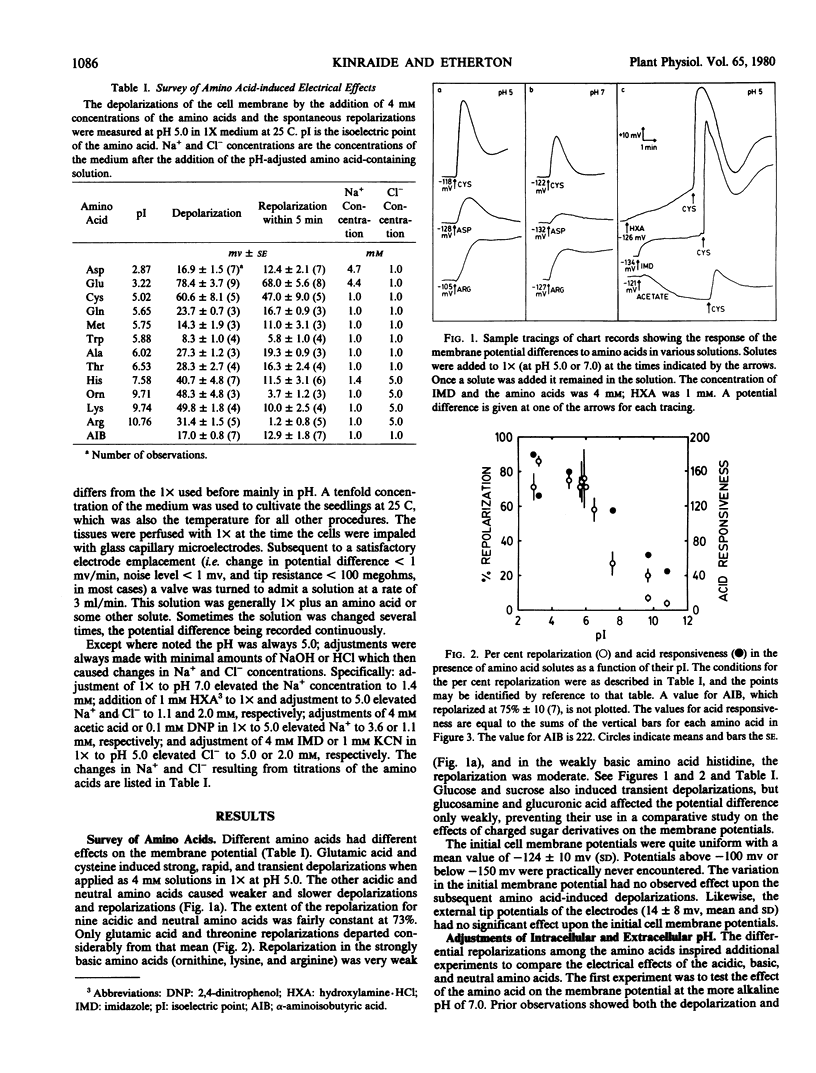
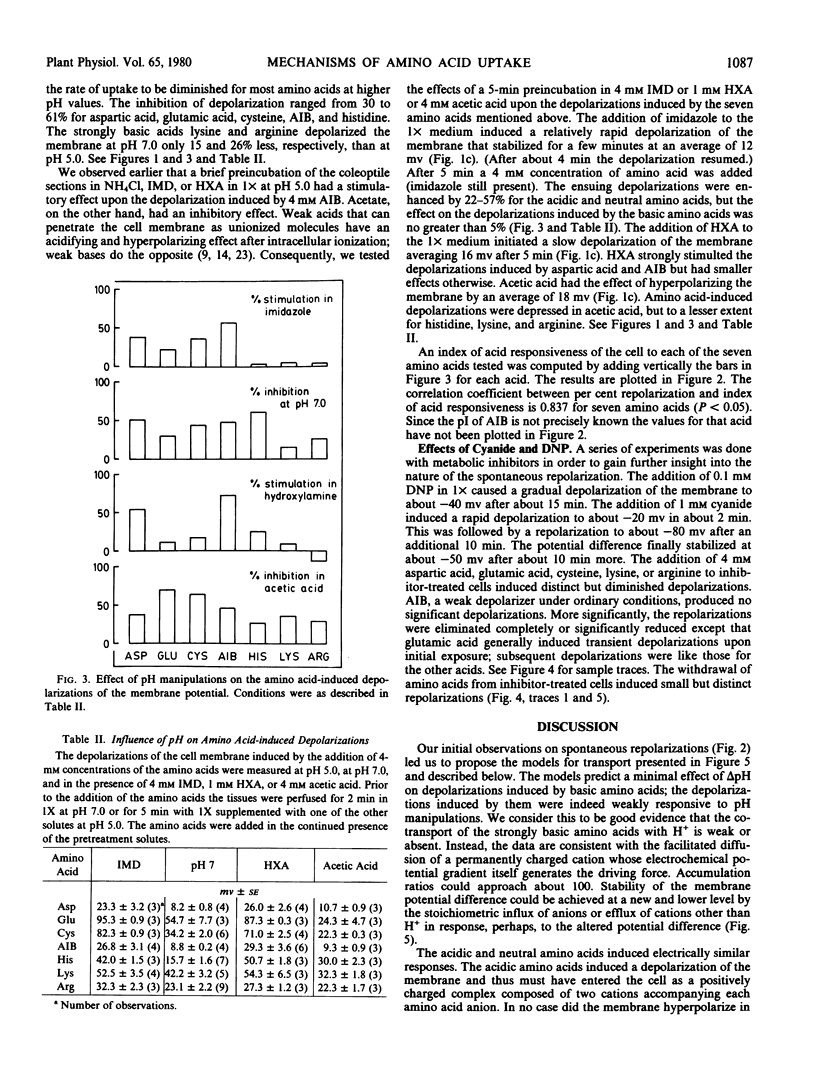
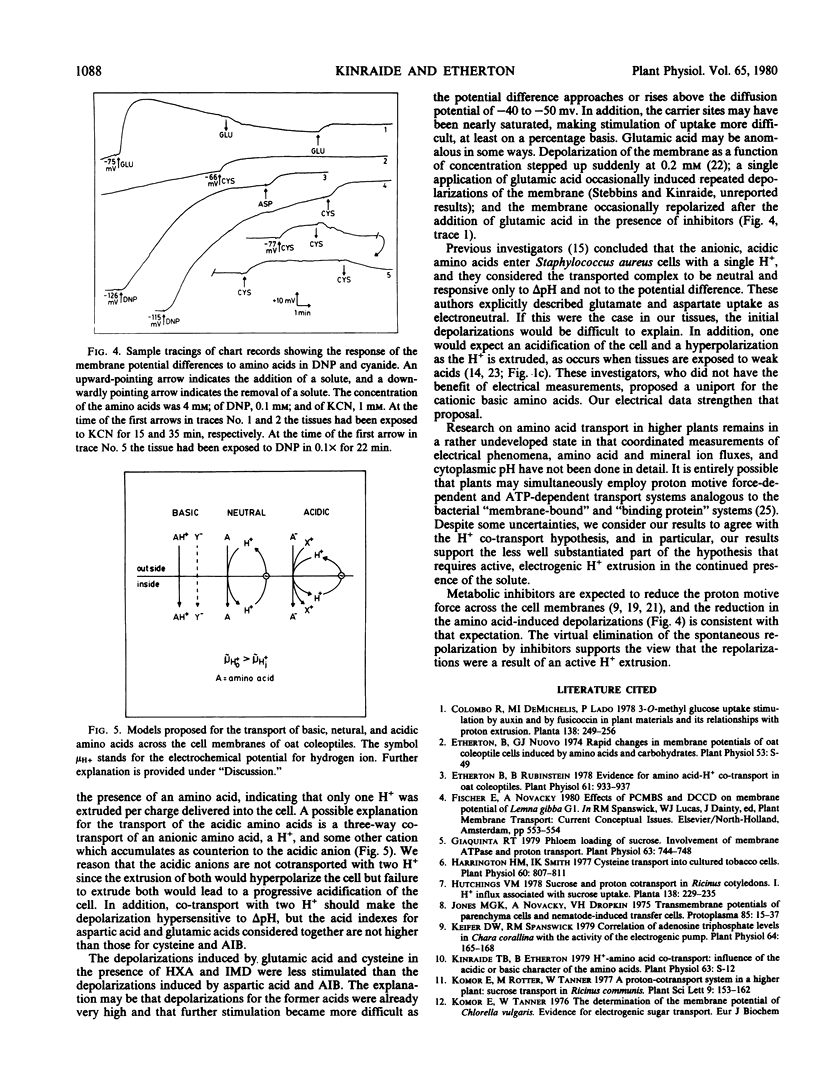
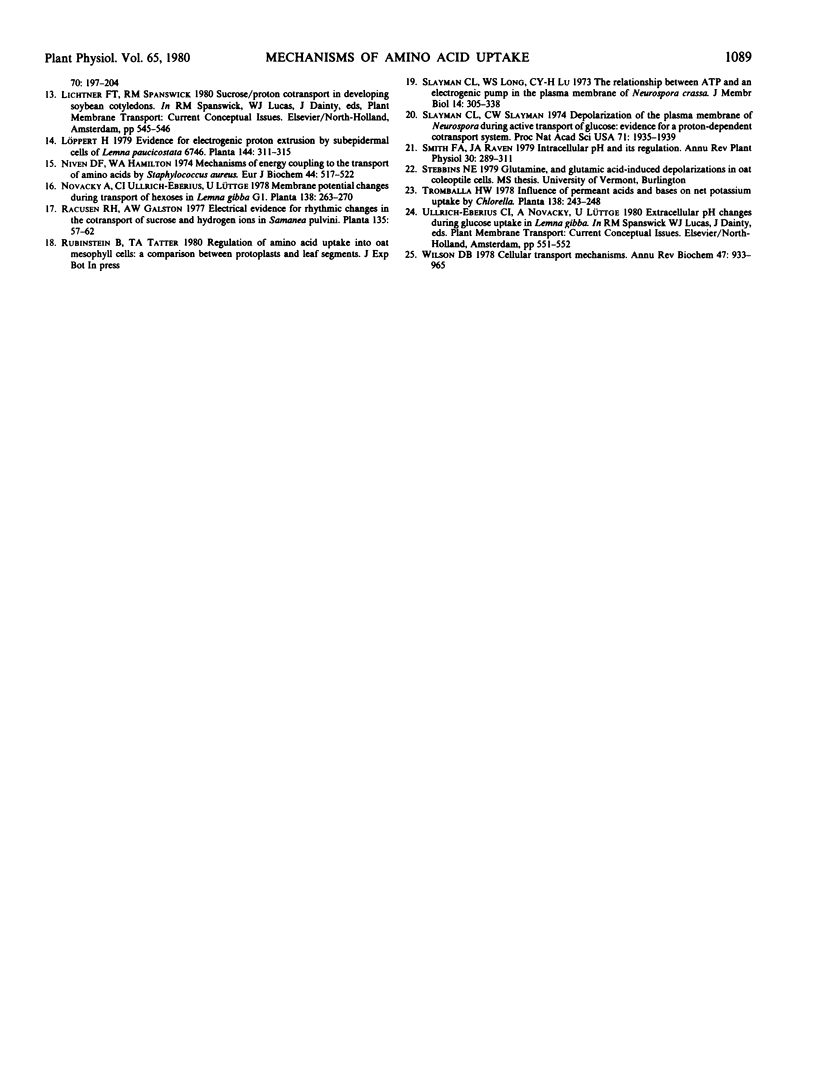
Selected References
These references are in PubMed. This may not be the complete list of references from this article.
- Etherton B. Evidence for amino Acid-h co-transport in oat coleoptiles. Plant Physiol. 1978 Jun;61(6):933–937. doi: 10.1104/pp.61.6.933. [DOI] [PMC free article] [PubMed] [Google Scholar]
- Giaquinta R. T. Phloem loading of sucrose: involvement of membrane ATPase and proton transport. Plant Physiol. 1979 Apr;63(4):744–748. doi: 10.1104/pp.63.4.744. [DOI] [PMC free article] [PubMed] [Google Scholar]
- Harrington H. M., Smith I. K. Cysteine transport into cultured tobacco cells. Plant Physiol. 1977 Dec;60(6):807–811. doi: 10.1104/pp.60.6.807. [DOI] [PMC free article] [PubMed] [Google Scholar]
- Keifer D. W., Spanswick R. M. Correlation of Adenosine Triphosphate Levels in Chara corallina with the Activity of the Electrogenic Pump. Plant Physiol. 1979 Aug;64(2):165–168. doi: 10.1104/pp.64.2.165. [DOI] [PMC free article] [PubMed] [Google Scholar]
- Niven D. F., Hamilton W. A. Mechanisms of energy coupling to the transport of amino acids by Staphylococcus aureus. Eur J Biochem. 1974 May 15;44(2):517–522. doi: 10.1111/j.1432-1033.1974.tb03510.x. [DOI] [PubMed] [Google Scholar]
- Slayman C. L., Long W. S., Lu C. Y. The relationship between ATP and an electrogenic pump in the plasma membrane of Neurospora crassa. J Membr Biol. 1973;14(4):305–338. doi: 10.1007/BF01868083. [DOI] [PubMed] [Google Scholar]
- Slayman C. L., Slayman C. W. Depolarization of the plasma membrane of Neurospora during active transport of glucose: evidence for a proton-dependent cotransport system. Proc Natl Acad Sci U S A. 1974 May;71(5):1935–1939. doi: 10.1073/pnas.71.5.1935. [DOI] [PMC free article] [PubMed] [Google Scholar]
- Wilson D. B. Cellular transport mechanisms. Annu Rev Biochem. 1978;47:933–965. doi: 10.1146/annurev.bi.47.070178.004441. [DOI] [PubMed] [Google Scholar]
- de la Roche A. I. Increase in linolenic Acid is not a prerequisite for development of freezing tolerance in wheat. Plant Physiol. 1979 Jan;63(1):5–8. doi: 10.1104/pp.63.1.5. [DOI] [PMC free article] [PubMed] [Google Scholar]


